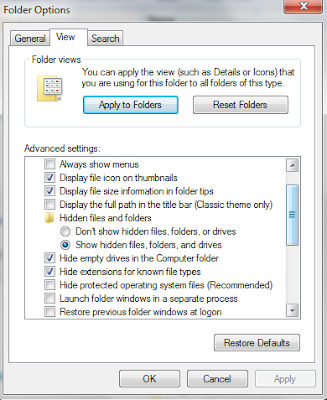The concept behind hibernate mode
When you switch your PC or laptop to hibernate mode, you are turning your computer off but everything you had up last while the computer was on is saved. So when you turn your machine back on at later time, the system will load your last work, i.e., it will restore the state it was in before it went to hibernate. As we all know when we restart our system, all the data that was present in RAM are wiped out, how exactly does this hibernate mode loads your last work? Let's see the concept behind hibernation in this post.
How hibernate mode works?
In hibernate mode, the current state of the system is saved in the hard disk, in a file named hiberfil.sys. This file resides in the C drive. By default, this file is hidden. To see the file, you have to uncheck "Hide protected operating system files" in folder options. Simply follow the below step.
- Open "Folder Options" window.
- Go to "View" tab.
- Uncheck "Hide protected operating system files".

Note that it is recommended to hide OS protected files. So, this is how your data gets persisted and loaded during hibernation and waking up.
How hibernate differs from standby mode?
Unlike hibernate mode, the standby mode doesn't store data in the system state in the hard disk. It keeps the state in RAM but cuts off power supply to connected peripheral devices such as hard drive, monitor, etc. Your system gets restored quickly as your data is stored in RAM. Waking up peripheral devices is the slow part. You are running your system in a very low power mode but still the system is ON. This mode can be very useful if you are using a notebook and need to save the battery when you are away.
Hey, thanks for hanging around. Check out my other blog at https://www.thegeeksclan.com where I post about programming.
Follow us on Twitter @theGeeksClan
Follow us on Facebook @thegeeksclan



Comments
Post a Comment